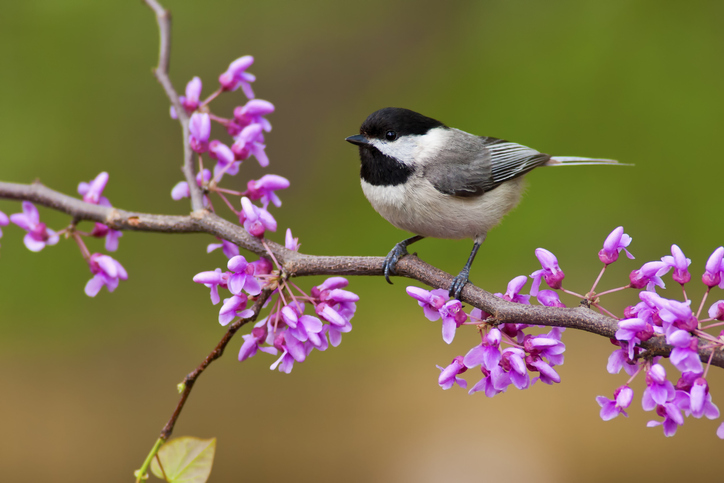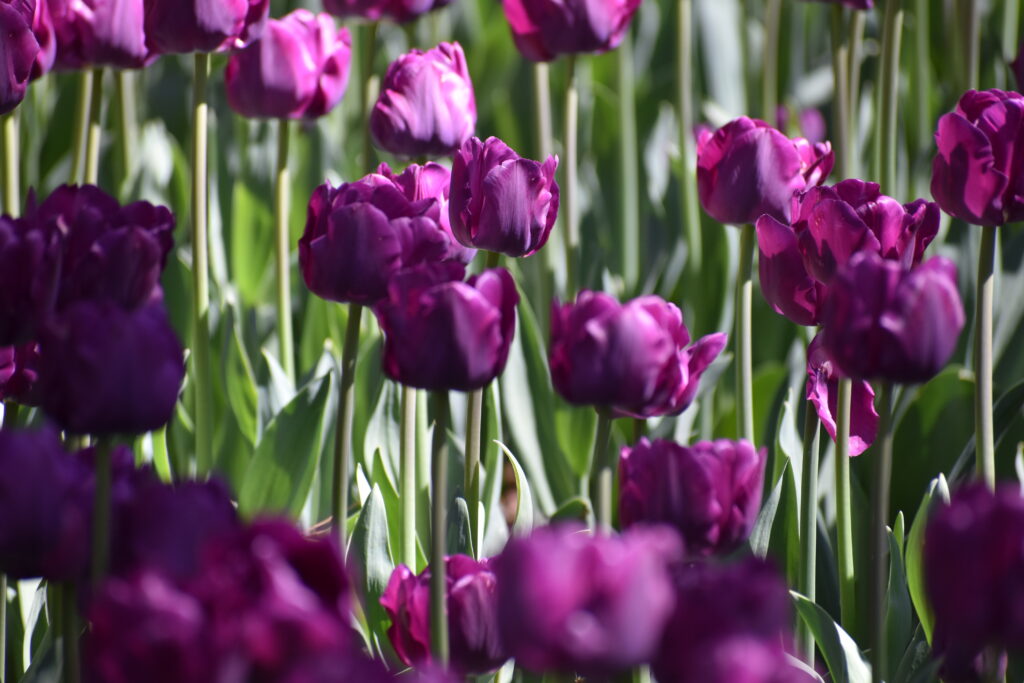The lens of my camera moved from branch to branch, following a black-capped chickadee that was desperate to avoid having its photo taken.

“What you got there?”
I looked over my shoulder to see a man and woman approaching me.
“A couple of black-capped chickadees,” I said as I turned back to the tree and pointed.
We all peered at the tree together.
The woman broke the silence. “I was just thinking that I hadn’t seen any birds yet.”
I thought about the tufted titmice I had seen earlier—the sound of their song as they took turns calling out to each other. Two turkey vultures were circling above the nearby lake just minutes ago. A pileated woodpecker cackled in the distance.
I started to tell her about them but stopped myself. “I bet you’ll see more in this area of the gardens.” We were in a wooded area of Garvan Woodland Gardens at this point.
It’s actually not surprising that she hadn’t noticed the birds. She was there to see the tulips. We all were. The striking colors and magnitude of the 150,000 tulips was breathtaking. And it was novel.
The Power of Novelty

I had been reading about the power of novelty in The Nature Fix (See the Resources Page). Novelty is good for our brains. Research shows that novel experiences result in the release of dopamine.… Read the full post “Novelty and the Brain”